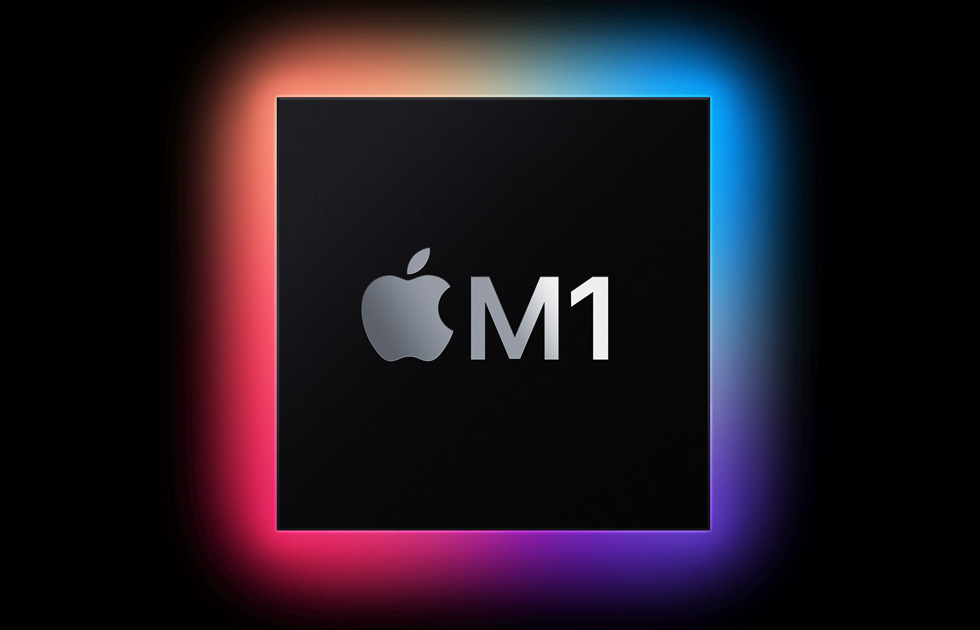Introducing the new MacBook Air, 13-inch MacBook Pro, and Mac mini, all with the Apple M1 chip
M1
Yesterday, Apple released its first-ever line up of Macs with its own Apple Silicon, the M1 chip, in a much-awaited release. The event, which you can view above, started at Apple Park, where CEO Tim Cook outlined the progress Apple has made this fall in an unprecedented series of releases at 3 events, from OS updates to Apple Watch, iPad, and iPhone. Now, it's finally time for the Mac, Apple's most popular line of products. From Apple's top-secret chip lab, John Ternus (VP, Hardware Engineering) introduced Apple's new, high efficiency and performance chip, the M1. It uses the same Apple Silicon as Apple's other products, like Watch, iPad, and iPhone. M1 is an SoC (System on Chip). This means that all of the various chips that are normally distributed around a laptop, such as the CPU, GPU, memory, I/O, and security chips are all in one. Johny Srouji (SVP, Hardware Technologies) explains that it also features a UMA (unified memory architecture), which means that are the systems on the chip can access the same memory, making it much more efficient. Apple's chip uses the industry-leading 5nm technology to pack 16 billion transistors onto a single chip.
The CPU on M1 has 8 cores, half of which are high performance and half high efficiency. The high-performance cores are designed to run each thread as efficiently as possible with maximum performance, resulting in the fastest CPU cores in the world. The high-efficiency cores are designed to run lighter workloads at just a fraction of the energy consumption, and the performance manager decides in real-time where to run the code. The graph shows that M1 delivers twice the performance of the latest PC laptop at just a fraction of the energy consumption. Similarly, the GPU is designed to work at maximum efficiency within the thermal envelope of the laptop, which is extremely difficult to achieve with integrated graphics. This means that most PCs use a separate, energy-consuming graphics card. M1 can deliver up to twice the graphics performance of the same PC laptop chip mentioned above and reaches its peak performance at a third of the power consumption. M1 also features a 16-core neural engine designed to excel at machine learning tasks such as video analysis and voice recognition. Finally, the chip has Apple's latest Secure Enclave for best-in-class security, and "is by far the best chip we've ever created" (Srouji).
macOS Big Sur
Apple has also built a new macOS specifically for M1 - Big Sur. Craig Federighi (SVP, Software Engineering) introduces the new operating system, which can now instantly wake your Mac from sleep on Apple Silicon. Safari is twice as responsive, along with the rest of the system. UMA is part of this because it allows all the components of the software to use the same data formats, dramatically decreasing time and energy consumption. macOS Big Sur also takes full advantage of the performance and energy-efficient cores on M1, allocating intensive tasks like gaming and rendering to performance and simpler tasks like making a note to the energy-efficient ones. This dramatically increases performance and battery life. Big Sur will also have Mac apps that have been optimized for M1, along with Universal apps, which means apps that can run on both Intel and Apple Silicon processors. If apps haven't been updated to Universal, Big Sur will also include Rosetta 2, which can translate Intel apps into a language Apple Silicon can understand. Besides that, M1 uses the same architecture as the Apple chips in the iPhone and other products, which means that developers can make their mobile apps available on a laptop.MacBook Air
It has already redefined what a thin, light notebook can do. Laura Metz (Mac Product Line Manager) introduces the first Mac with M1, the all-new MacBook Air that's faster than ever before, with all the features users love. With M1, the Air is more than 3 times faster than the previous generation, and graphics are up to 5 times faster, so users can play games and edit high-resolution video at full quality. And the 16-core neural engine drastically speeds up the machine learning of the Mac. This combined with Big Sur's power efficiency leads to a battery that can last up to 18 hours and significantly longer on video calls. It also means that it can operate without a fan for a quiet performance no matter how demanding a task you run. The neural engine is also used on video calls to improve your look with dynamic range, auto white balance, and more. The retina display now supports P3 wide color range, and the Secure Enclave on M1 delivers features like Touch ID, all in the same wedge-shaped design.
Mac Mini
Similarly, the Mac Mini takes a giant leap in both processing and graphics performance over the previous 4-core Intel version, as explained by Julie Broms (Senior Manager, Hardware Engineering). As an added plus, it comes at a lower price tag, just $699 compared to $799 for the previous generation.
And finally, 13-inch MacBook Pro
The best-selling 13-inch notebook in its class, the MacBook Pro is used by a wide variety of people, from students to creative professionals. With the new M1 chip, they will be able to take it even further. Shruti Haldea (Mac Product Line Manager) explains its CPU, which is up to 2.8 times faster, and the GPU, which is up to 5 times faster, meaning that developers and creators can innovate faster than ever. It's 3 times faster than the best-selling Windows laptop in its class. The neural engine is also significantly faster, and like the MacBook Air, a combination of M1's efficiency and Big Sur gives it an astonishing 20 hours of battery life, the longest ever in a Mac. The new Pro also has a studio mic system with the same ISP camera system as the Air.
Everything will begin shipping next week, and macOS Big Sur is set to release on Thursday for these Macs.






No comments:
Post a Comment